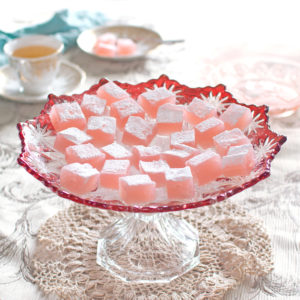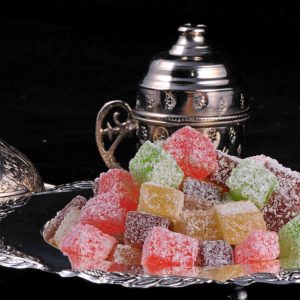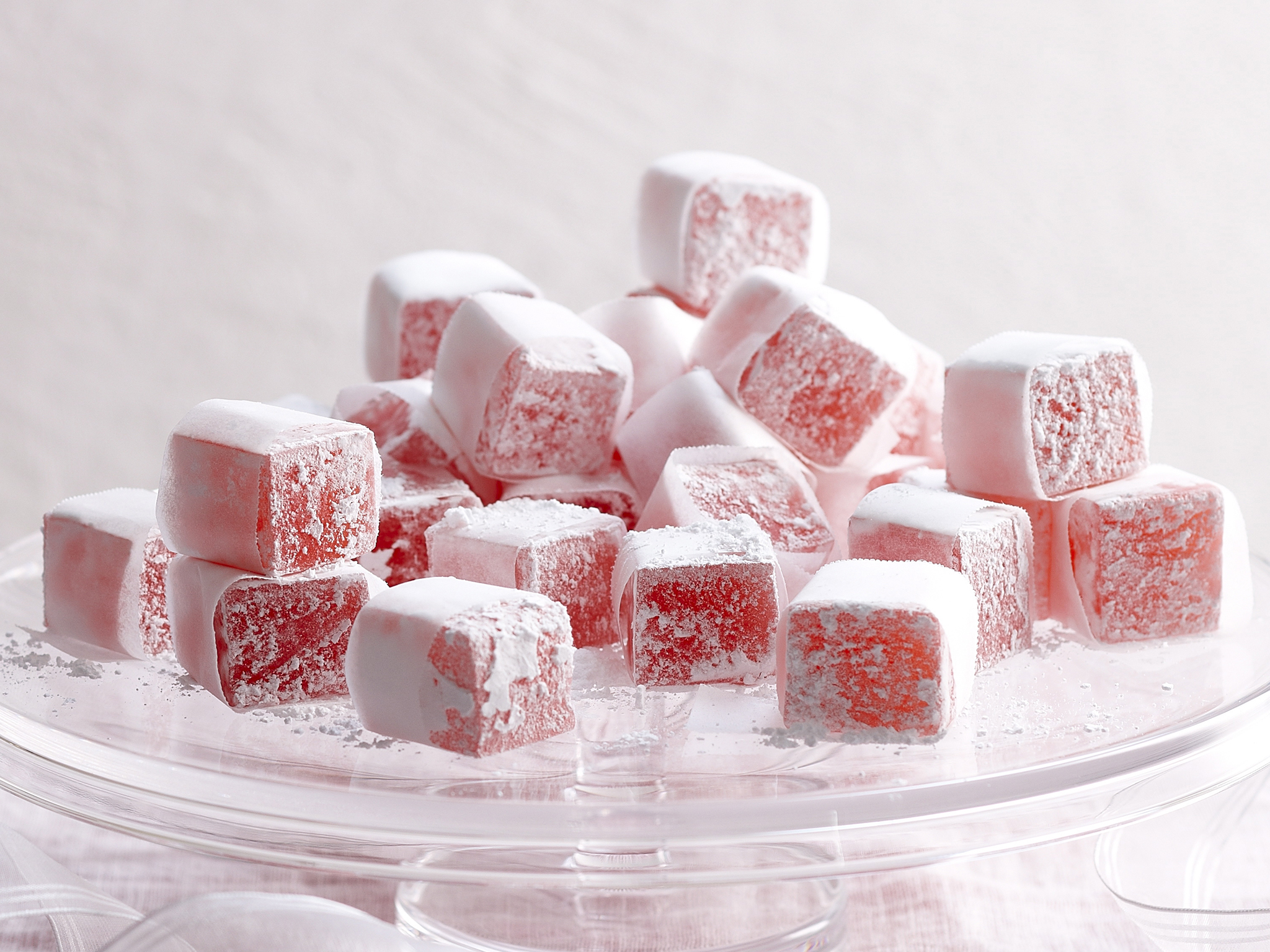Every home in Turkey has a stash of these succulent, sugary cubes, which are offered with tea and coffee, and after breakfast, lunch and dinner. The trays of dusty pink, yellow and green lokum are as much a part of Istanbul life as the imam’s dawn call. Turkish delight must be the only sweet in the world that is so embedded in a country’s national identity. We do not think of Britain and mint humbugs or America and bubblegum, but we do think of Turkey and Turkish delight. Turkish delight was invented by Bekir Affendi, who came to Istanbul in 1777 from the eastern province of Anatolia. He opened his first Turkish Delight shop, in a narrow street close to the spice bazaar, which is still there to this day and is still owned by his descendants and run by the fifth generation of families he employed.
Bekir concocted the recipe for Turkish delight in 1777 as an improvement on an old mixture of honey or molasses, water, and flour. He used cornflour and the newly available refined beet sugar and developed the firm, chewy delicacy. Word spread and the Sultan appointed him chief confectioner to the palace.




